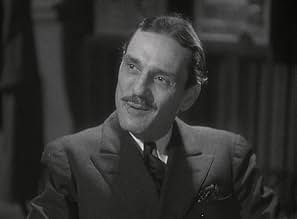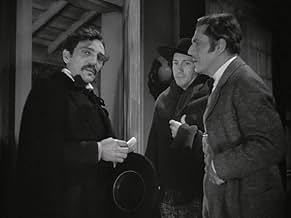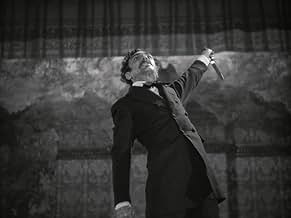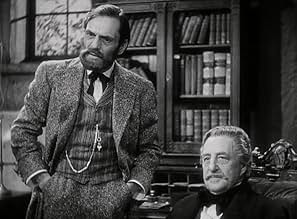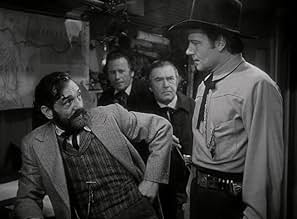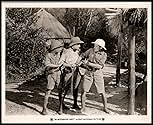Francis McDonald(1891-1968)
- Actor
Francis J. McDonald - not a name to bring ready recognition-but a look
at the face reminds one of many old movie roles indeed. His career as
an actor literally spanned from early silent films and the great silver
screen era of sound film to follow on through the golden age of
television. His screen credits, noticeable and small, amount to an
amazing nearly 350 roles. Starting on stage, he was a slight but
handsome leading man who entered films in 1913 and continued lead and
featured romantic roles from contemporary to costume adventure into the
1920s. It was during this period that he married - and divorced -
actress Mae Busch, most familiar for the many Laurel and Hardy comedies
she did. MacDonald worked on Broadway briefly in only two plays
(mid-1918). By the time he did his first totally sound film (late
silent movies had intervals of background or short dialog sound),
Burning Up (1930), MacDonald had 83 films under his belt. But into the 1930s,
being older, his roles were turning toward shady characters of second
order - and increasingly uncredited. With dark hair and mustache and
beady eyes with a prominent nose, MacDonald fit well into many an
ethnic or sneaky villain role and continued in demand. He got to know
Cecil B. DeMille and had a regular featured character role in his long history
of films beginning with The Plainsman (1936).
Still through the 1930s and 40s MacDonald averaged a steady five to ten films a year-dipping somewhat in the World War II years. Into the 1950s he was increasingly cast in one of his perennial staples, westerns, with roles already familiar to him: weaselly, tin horn gamblers, henchmen, but also dignified Indian chiefs. He was a natural to move into the incredibly popular western phenomenon that burst over the new medium of TV. He showed up in the spectrum of episodic oaters: from early Range Rider, Kit Carson, Wild Bill Hickok, and The Lone Ranger to later fare, such as, Have Gun-Will Travel, Wanted Dead or Alive, Wagon Train, the whole stable of Warner Bros. westerns at the end of the decade (Maverick, etc.), and The Virginian in the next. In the meanwhile there were some good character pieces in movies. Perhaps the most poignant being his last for DeMille's, The Ten Commandments (1956), where he had the small but showcase role as Simon, the old Jewish slave. Bedraggled and working in the clay pit - with Charlton Heston - he pleads for freedom for the Israelites - and gets a a trowel in the gut from a Egyptian guard for his trouble - dying heroically in Heston's arms - it is classic DeMille. And it was classic MacDonald - always ready to give a skillful and memorable performance.
Still through the 1930s and 40s MacDonald averaged a steady five to ten films a year-dipping somewhat in the World War II years. Into the 1950s he was increasingly cast in one of his perennial staples, westerns, with roles already familiar to him: weaselly, tin horn gamblers, henchmen, but also dignified Indian chiefs. He was a natural to move into the incredibly popular western phenomenon that burst over the new medium of TV. He showed up in the spectrum of episodic oaters: from early Range Rider, Kit Carson, Wild Bill Hickok, and The Lone Ranger to later fare, such as, Have Gun-Will Travel, Wanted Dead or Alive, Wagon Train, the whole stable of Warner Bros. westerns at the end of the decade (Maverick, etc.), and The Virginian in the next. In the meanwhile there were some good character pieces in movies. Perhaps the most poignant being his last for DeMille's, The Ten Commandments (1956), where he had the small but showcase role as Simon, the old Jewish slave. Bedraggled and working in the clay pit - with Charlton Heston - he pleads for freedom for the Israelites - and gets a a trowel in the gut from a Egyptian guard for his trouble - dying heroically in Heston's arms - it is classic DeMille. And it was classic MacDonald - always ready to give a skillful and memorable performance.

